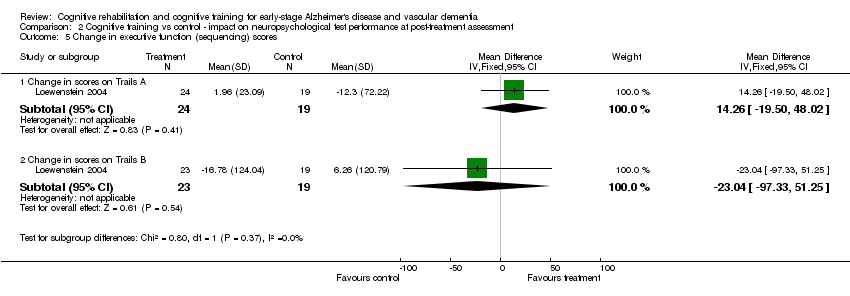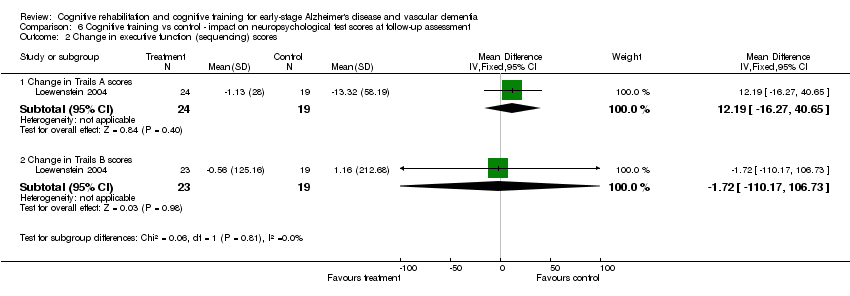Contenido relacionado
Revisiones y protocolos relacionados
Alex Bahar‐Fuchs, Linda Clare, Bob Woods | 5 junio 2013
Vasiliki Orgeta, Kathryn R McDonald, Ellen Poliakoff, John Vincent Hindle, Linda Clare, Iracema Leroi | 26 febrero 2020
Szabolcs Szatmári, Peter Whitehouse | 20 enero 2003
Viktoria Mühlbauer, Ralph Möhler, Martin N Dichter, Sytse U Zuidema, Sascha Köpke, Hendrika J Luijendijk | 17 diciembre 2021
Nicolas Farina, David Llewellyn, Mokhtar Gad El Kareem Nasr Isaac, Naji Tabet | 18 abril 2017
Emma L Cunningham, Stephen A Todd, Peter Passmore, Roger Bullock, Bernadette McGuinness | 24 mayo 2021
Alex Bahar‐Fuchs, Anthony Martyr, Anita MY Goh, Julieta Sabates, Linda Clare | 25 marzo 2019
Jacqueline Birks, Jess López‐Arrieta | 22 julio 2002
Julian PT Higgins, Leon Flicker | 23 octubre 2000
João M JMC Coelho Filho, Jacqueline Birks | 23 abril 2001

















